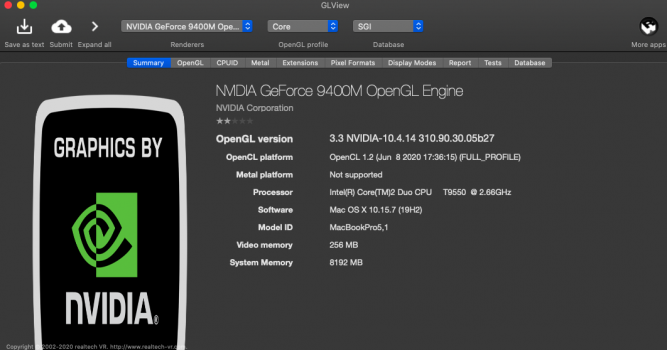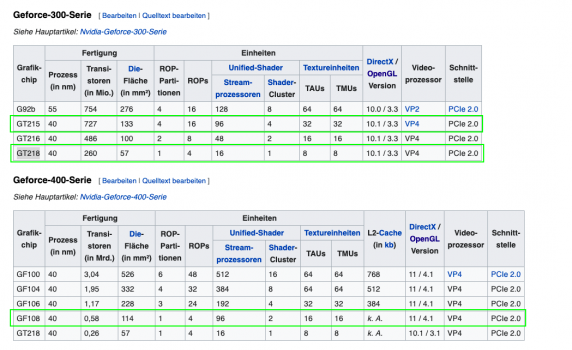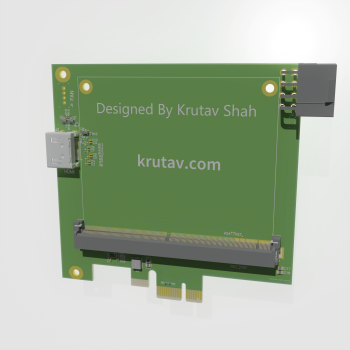Hi Arthur,Hello dear Larsvonhier,
for many years I am upgrading my machine (MacBookPro5,1) some weeks before I was looking into if I could upgrade the processing power of my laptop and stumbled upon your videos () where you were showcasing that you successfully got an eGPU to work with your MacBookPro4,1. I got inspired on setting things up by your example via the ExpressCard34-Slot. Since some weeks now I am trying to get everything to work properly but I still keep failing at it. Then I found your thread here and didn't want to hesitate to maybe ask you for your help (since you even got everything worked out on an older MBP).
At this moment I got macOS Catalina 10.15.7 (19H2) working on my MacBookPro5,1 from Late 2008 by using DosDude1's Patcher. Everything is running smoothly except for some bugs here and there which go away after some time (mainly only coming up at the start of the system). I already got the EXP GDC Beast version 8.5c where I want to that I wanted to hook up with the Gainward Phantom (GeForce) GTX 770 working as eGPU. The GraphicCard seems to be natively compatible with Catalina because of the KeplerChip, but the machine doesn't recognize it - although it's juiced up via the ATX-Power module. The fans are also running on full speed. I installed the latest CUDA Driver from NVidia but there are no WebDrivers from NVidia that would work. When trying to install them it only says "Mac OS X version is not compatible // Mac OS X version 10.15.7 (19H2) is not supported with this package. Please see NVIDIA’s website for further driver information."
Then I read that the NVidia drivers are only supported up to High Sierra which led me to try and install a dual boot with Catalina for my main tasks and High Sierra for cutting video and other intensive work. But that didn't workout fine. It seems like the HighSierra Patcher from DosDude1 only allows one EFI and so my Catalina EFI got deleted and I only could get into HighSierra. But even there I couldn't get the eGPU to work/being recognized by the system. So I had to reinstall the functioning Catalina system back from my TimeMachineBackups.
Now you mentioned that you and/or your colleague from work still got DosDude1's Catalina to work fine with an eGPU Nvidia GraCa and I wanted to ask if you could help me with this?
Is there any solution? One thing I found is Lilu and the WhateverGreen Kexts which seem to need a Clover based EFI and as far as I know DosDude1's Patcher does not utilize Clover, right? But then I read that one could implement Boot Arguments from the Terminal and so the CloverConfigurator would become obsolete. Do you have some suggestions? Or do you think it would be a better choice to go with an AMD card? And if so which would you recommend?
Really appreciating your dedication, work and help to keep old hardware alive and running macOS with more graphical power.
Sorry if my English is not that good. I'm from Germany, too, and tried to keep it helpful for others that might search the web for similar answers
Best Regards,
Arthur
sorry for delayed response, there´s too much work load on my work days right now...
Good news: Yes, there is a way to get 10.15.6 (and .7) up and running with eGPUs, with expresscard34 solutions like the GDC beast and also (on newer machines) via thunderbolt-1 (!).
As you asked for the expresscard way to do it: The "secret" is to use Nvidia cards that are based on chipsets that are same or close to what Apple included in their earlier (2008..2010) laptops -> 8800M/GT, 9400M. These cards will then use OpenGL after patching for it with dosdude1´s tools. There is currently no way to patch the internal GPU for OpenGL and let the eGPU run with metal - but hey, there is no real disadvantage as the eGPUs running OpenGL are still way faster than their thermally throttled internal cousins. The only way to avoid this setback is to stick with 10.13.x and the available Nvidia drivers there. (It´s a shame that Apple and Nvidia behave like that and play kindergarden).
If you´re looking for the thunderbolt solution, I´d have to compile some step-by-step instructions and infos on the tools used (not sure if I used the then-current versions).
Let me know if this helped or where you´re stuck (and with what GPU)...
Last edited:






